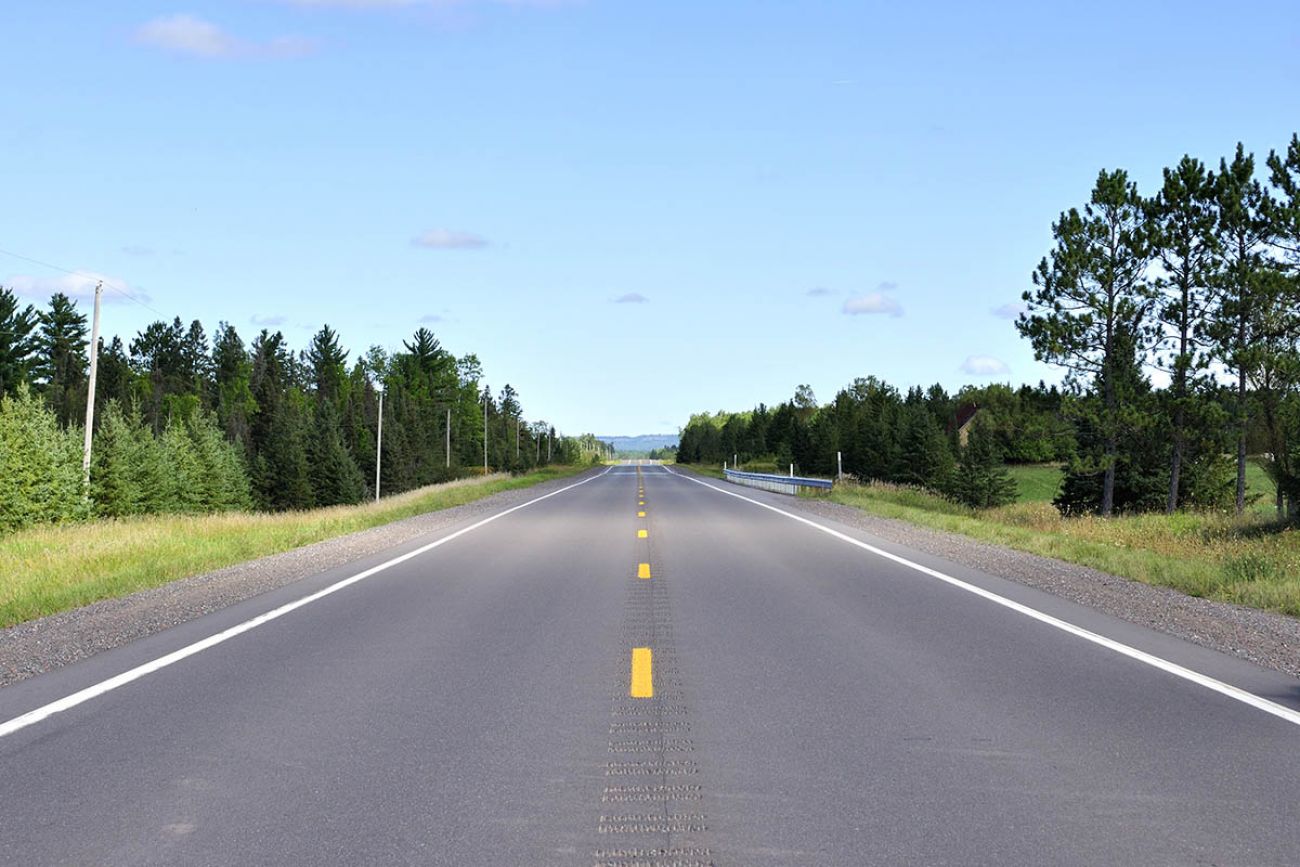Pedestrian deaths are rising on Michigan roads, the reason is up for debate

- Pedestrian fatalities in Michigan last year totaled 183, the most since records have been kept
- Overall pedestrian crashes fell about 20 percent during the pandemic
- Experts are baffled as to why Michigan roads seem to be more dangerous for pedestrians
In August 2021, in the parking lot of a Shop-N-Save in northern Michigan’s Benzie County, a 77-year-old woman was struck and killed by a large pick-up truck.
In October, a high school senior walking home from school in Rochester was hit by another student driving through an intersection right next to their high school. She died the next day.
In December, a 46-year-old mother of two was crossing 60th Street and Division Avenue when she was hit in Byron Township. She was pronounced dead at the scene.
Related:
- Crashes, injuries spike after Michigan boosts freeway speed limits to 75 mph
- Opinion | People are dying. Fix the damn road safety laws in Michigan.
Crossing the street is getting more dangerous in Michigan, with a pedestrian dying every two days in 2021. Pedestrian fatalities have been rising annually since 2018, hitting what was at least a 24-year high in 2021, with 183 individuals killed in encounters with vehicles. State data indicates that even while the overall number of pedestrian-vehicle accidents has dropped, those accidents have become more deadly.
A 5 percent increase in pedestrian fatalities from 2020 to 2021 contributed to an overall 10 percent increase in traffic fatalities across the state. Last year had the most traffic-related deaths in Michigan for 16 years, according to data released by the Michigan State Police earlier this summer, with 1,311 fatalities, or an average of over three deaths per day.
Jim Valenta, a highway safety expert in Dexter who has previously conducted research for the Federal Highway Administration, said Michigan is not the only state that has witnessed climbing pedestrian fatality numbers. From 2010 to 2020, pedestrian deaths increased by 54 percent across the U.S., rising faster than any other type of traffic fatality, according to a report put out by the Governors Highway Safety Association.
“It's not unique to Michigan,” Valenta said.
What’s curious is that the rise in fatalities over the past three years has been accompanied by a plummeting number of total pedestrian-involved crashes. From 2019 to 2021, pedestrian crashes in Michigan fell by 20 percent while fatalities rose by about the same margin.
Experts have a couple of hypotheses as to why vehicle-pedestrian accidents have become more deadly, but no one can say for certain.
“That’s the million dollar question,” according to Nancy Feldbush, a member of the communications department for the Michigan Office of Highway Safety Planning.
The office knows the answer could save dozens of lives, so they’re trying to figure it out. Feldbush noted that the recent uptick in pedestrian deaths coincided with the COVID-19 pandemic. It’s possible people altered their driving or transportation habits during that time, she said.
For instance, the New York Times reported that speeding and other forms of reckless driving also increased during the pandemic. Todd Scott, the executive director of the Detroit Greenways Coalition which advocates for safe pedestrian and bike paths in the Motor City, cited speeding as one of the main reasons he thinks pedestrian fatalities are on the rise.
During the pandemic, Michigan saw an uptick in speed-related traffic fatalities — an 8 percent increase from 2019 to 2020.
“Speed is the major determinant and whether a pedestrian lives or dies when they're hit by a car,” Scott said. “Even going 5 mph miles per hour faster can lead to more serious injuries or death.”
But road rage is probably not the sole reason Michigan roads are becoming more dangerous for pedestrians, Feldbush said.
“It's probably a multitude of things, a perfect storm coming together,” Feldbush said.
She also cited distracted driving, specifically texting or using a cell phone while behind the wheel, as another plausible culprit. Distracted driving has jumped 27 percent in Michigan over the past five years.
Traffic experts in the New York Times article mentioned that bigger and heavier car models can pose a greater danger to pedestrians. From 1989 to 2019, the average vehicle weight in the U.S. increased by 24 percent and nearly half of Michigan cars were SUVs in 2021.
Valenta said it might be tempting to assume that pedestrian fatality rates are correlated with vehicle size, but he’s not buying it.
“When you have a 180-pound pedestrian that is struck by a 3,300 pound vehicle, it really doesn't matter if that particular vehicle is heavier or lighter,” Valenta said. “The odds are so far in favor of the vehicle than the pedestrian.”
Even if weight is less important, Scott emphasized that cars with larger front ends — SUVs and trucks — are often more dangerous for pedestrians. He said a smaller sedan typically hits a pedestrian in the legs, an injury they are likely to survive. On the other hand, vehicles with taller front ends strike a pedestrian’s upper body or head, an accident that has a higher chance of being fatal.
It’s also possible that pedestrians and drivers alike are unaware, or ignorant, of pedestrian laws, Feldbush said. In about a third of pedestrian fatalities last year, the pedestrian was jaywalking.
That’s why the Office of Highway Safety Planning offers grants annually to cities with high pedestrian fatality rates for increased law enforcement. The office is also developing educational materials for the public that will explain Michigan’s pedestrian laws in layman’s terms.
“It's not only about giving tickets, it's about education, so that both pedestrians and motorists can learn the pedestrian laws,” Feldbush told Bridge Michigan.
Valenta said in some cases the laws and an increased police presence are not enough to protect walkers, though. Adding infrastructure that supports safe pedestrian practices — crosswalks, wider sidewalks and crossing lights — is crucial to preventing crashes, Valenta said.
“A lot of the communities that I've worked with place the responsibility for pedestrian safety in the hands of the police department or enforcement,” Valenta said. “The involvement of the engineering community is critical to improving pedestrian safety.”
According to the Detroit Free Press, between 2010 and 2016, Detroit had the highest per-capita pedestrian fatality rate of any large city in the U.S. Scott said Detroit has been working on transforming a couple roads every year into “streetscapes.” That process includes the implementation of sidewalks, bike paths, street lighting and other safety features.
“You design a road so that it's safer to use for everybody, not just those in motor vehicles,” Scott said.
Since 2019, the city has completed 15 streetscape projects, which Scott said looks like a step in the right direction. According to a recent analysis of data from the National Highway Traffic Safety Administration, as of 2020, Detroit ranked as the 16th most dangerous city for pedestrians based on the per-capita fatality rate.
Pedestrian fatalities in the Motor City are still on the rise though, up nearly 10 percent in 2021 from the year before.
In other areas, even after a crash, infrastructure can take a while to update. Rochester Hills resident Julia Wasiluk’s daughter was friends with the Stoney Creek High School senior, Elisa Volcic, who was fatally hit in October 2021.
Even though the intersection — Tienken Road and Clear Creek Drive — is close to the school property and frequently used by students, Wasiluk said a pedestrian crossing signal has not yet been installed.
“It was just heartbreaking,” Wasiluk said. “It’s right in front of the high school. Now, it’s like 10 months after the accident and there’s still no light there. When a student is hit, you’d think that would be a priority.”
Through the end of July, State Police had reported 60 pedestrian deaths so far in 2022 — though that number could change slightly as July accident reports continue to be investigated. As of now, that’s down 31 percent from the 87 pedestrian fatalities that had been reported by the same time last year.
“But does that mean this number is going to end up being lower than last year's? I can't guarantee that,” Feldbush said.
See what new members are saying about why they donated to Bridge Michigan:
- “In order for this information to be accurate and unbiased it must be underwritten by its readers, not by special interests.” - Larry S.
- “Not many other media sources report on the topics Bridge does.” - Susan B.
- “Your journalism is outstanding and rare these days.” - Mark S.
If you want to ensure the future of nonpartisan, nonprofit Michigan journalism, please become a member today. You, too, will be asked why you donated and maybe we'll feature your quote next time!





